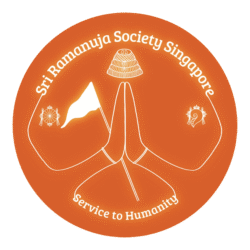Adorning the holy vertical marks

Myriads of bhagavat sāshtrams and purāṇa-s have asserted the need for Srīvaishnavā-s to apply the tirumaṇ-s on their bodies on a daily basis. The phrase ‘ūrdhva puṇdram’ is defined as applying the Tirumaṇ in an upward fashion’. Those who adorn tirumaṇ will be taken to divine lōka-s above us. Also, their thoughts, words and actions will also be elevated, alongside their souls, which will allow them to reach the ultimate goal of Moksham. In Varadarājastavam, Srī Kūrattāzhvān states in the 26th slōka the following verse, which perfectly encapsulates the aforementioned message.
उद्धरत्युपरि भक्तजना नि ति ऊर्ध्व ता श्रयण सूचि त शक्ति म्।
ऊर्ध्व पुण्ड्र ति लकं बहुमा ना त् किं बि भर्षि वरद स्वलला टे॥
uddharatyupari bhaktajanāniti ūrdhvatāśrayaṇa sūcita śaktim |
ūrdhvapuṇḍra tilakaṁ bahumānāt kiṁ bibharṣi varada svalalāṭe ||
We need to procure the fine white sand, turn it into plaster and apply it onto their foreheads as well as the rest of the bodies in a skywards motion. It is best that they acquire this soil that is found exclusively in divine kshēthram-s or places where tulasi is being cultivated. After reciting the necessary mantras, one has to mix the powder with water until it turns into a mire-like substance and write the bhija letter of Srīnrusimhan. Then, he has to apply it on the centre of the forehead in shapes as per his Acharya lineage, leaving ample space in the middle. In this gap, Srīchūrṇam has to be adorned. Such ūrdhvapundram becomes a temple for Bhagavān. One should not keep an empty forehead without ūrdhvapundram.
Without ūrdhvapundram, any form of worship is futile. When one adorns his tirumaṇ via urdhavapundram, he will start becoming more devoted towards bhagavān and will be blessed with auspicious thigs. Just like how frogs quiver at the sight of a serpent, the messengers of Yama will quiver at the sight of a person adorning ūrdhvapuṇdram. The ūrdhvapuṇdram symbolises to the messengers of Yama that the one adorning it is a Vishnu bhakta and consequently, they will reverentially keep away from him.
Since we are subservient devotees of our divine Bhagavān, it is significant – perhaps even essential – to adorn the insignia of Him, in the form of the tirumaṇ, on our sarīrās (bodies). Similar to how one cleans a temple thoroughly to prep it before beautifully applying rangoli on the floor, a Srīvaishnava needs to apply ūrdhavapuṇdram on his cleansed body, which is the residential place of Bhagavān.

You may be thinking: Is it not enough to simply fill our hearts with devotion? What is the purpose of having this sort of outward appearance? It is true that one needs to be devoted to Bhagavān and commit themselves to His lotus feet before anything else. However, we should not only relate our souls to Bhagavān. Since we are subservient to Him, we should also relate and surrender our bodies to Him. In order to showcase this, it is pivotal to adorn the tirumaṇ. Hence, not only should we show our devotion to the Lord from inside (soul) but in an outwardly fashion (body) as well. Therefore, just like how is essential to have faith and devotion in our hearts, it is critical to showcase our faith through the application of the Tirumaṇ. This is our duty.
Once upanayanam and samāshrayaṇam have been conducted, one should apply dvādasa ūrdhvapuṇdram (twelve tirumaṇs) on his body and perform worship like japam and pūjā. He should apply the ūrdhvapuṇdram on his forehead, the centre and two sides of his stomach, the centre of his chest, both shoulders, the centre and two sides at the base of his neck, his nape and the bottom of his spine. The procedure, count and shape may differ between different lineages of Srivaishnava. But we should always adorn ūrdhvapuṇdram.

No responses yet